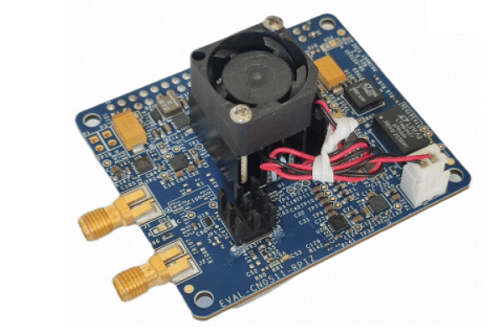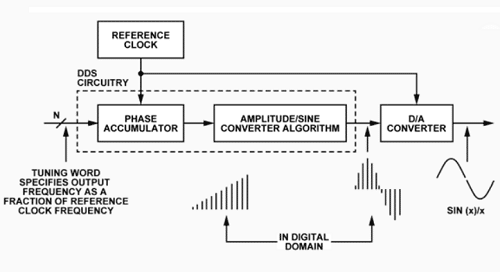Signal generators are one of the most important tools for many electronics engineers. When designing and testing a radar or other RF systems, a low noise, low distortion source capable of producing high frequency is essential to troubleshoot or debugging a system. One of the most common pieces of equipment in an RF test lab is a synthesized RF signal generator. Synthesized RF signal generators are standard equipment but often require additional filtering when low distortion or low broadband noise is required.

Image of EVAL-CN0511-RPIZ Evaluation Board
But, high-quality, high-frequency generators don’t come cheap, so if you are like most of us who have limited resources or prefer building your own equipment, then in the article we will see a reference design of a complete DC to 5.5 GHz sine wave signal generator based on a direct digital synthesis (DDS) architecture.
EVAL-CN0511-RPIZ is a reference design from Analog Devices which only requires an additional R-Pi for operation. The RF digital-to-analog converter (DAC), controlled using a 100 MHz Serial Peripheral Interface (SPI) from the RPi, allows for single-tone, phase coherent, and fast frequency hopping across the spectrum.
The reference design doesn’t require any additional clock source as an onboard crystal oscillator is used to meet all the clocking requirements. Moreover, all the necessary power is also derived from the Raspberry Pi microcontroller, with ultra-high power supply rejection ratio (PSRR) regulators and passive filtering to minimize the impact of the power converters on RF performance. The reference design is a compact, low-cost, signal generator that offers accurate output power and wide bandwidth comparable to that of commercial benchtop signal generators.

Block diagram of a typical DDS based signal generator
Features of The Reference Design
• Supports RF signal synthesis up to 5.5 GHz
• +/-0.5 dB calibrated output power across the operating bandwidth
• From 0 dBm to -40 dBm
• High dynamic range and signal reconstruction bandwidth
• Fully supports zero intermediate frequency (IF) and other dc-coupled applications
• On-board free-running 122.88 MHz precision oven-controlled crystal oscillator (OCXO)
• Features low output ripple with low output capacitance
This reference design has been tested by Analog Devices. The company has also provided additional resources such as schematics, gerber files, etc. You can find additional data about the reference design on the company’s website.
To read more about this reference design click here







